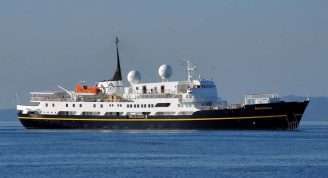Description
A panoramic trip along the Elbe
The Sea Cloud ii departs from Hamburg’s harbour and glides along the Elbe at a leisurely pace. Past the
patrician mansions of the Elbchaussee, stair-lined Blankenese, the Airbus grounds and the picturesque
banks of the Elbe with their green dykes.
Seven countries in 13 days
From the distinctive architecture of Scandinavia to the fairytale romance of St Petersburg and its golden cupolas: The Baltic Sea offers a range of unique and vastly differing impressions. On its journey, our windjammer will call at ports in seven countries offering countless UNESCO World Heritage Sites and a fascinating insight into the scenic and cultural diversity of this region.
Gdansk: a city with many stories to tell
Founded over one thousand years ago and renowned as a cosmopolitan, wealthy trade port, Gdansk is one of Poland’s most beautiful cities. The “Rechtstadt” in the heart of the city is a must, enchanting visitors with delightful small streets and a wealth of historical sights: St Mary’s Basilica, Arthur’s Court and the Golden Gate are all easily accessible on foot.
Shifting sand dunes and wooden houses: the Curonian Spit
Even Thomas Mann could see the Curonian Spit’s potential as a tourist spot. Enormous shifting sand dunes tower over this small strip of land that separates the Baltic Sea from the Curonian Lagoon, earning this UNESCO World Heritage Site the epithet “The Sahara of East Prussia”. Klaipeda, situated on the northern end of the spit, is west Lithuania’s cultural centre, enchanting visitors with quaint timber-framed houses and neo-Gothic architecture.
Stockholm and its archipelago
On mild summer evenings, Sweden’s capital city exudes a Mediterranean joie de vivre. Stockholm is creative and in tune with nature, welcoming and historical, a shopping paradise and home of the Royal Palace. Upon departure in the evening, you will be greeted by an idyllic view of the old town island before entering the enchanting world of the skerry landscape and its 30,000 islands.
St Petersburg – the old city of the tsars
In 1703, Tsar Peter the Great charged the best architects of his day with the planning of a perfect and harmonious city. The result was one of the most brilliant cities of old Europe. Thanks to its abundance of unique buildings, including the Church of the Resurrection, St Isaac’s Cathedral, the Hermitage and the Catherine Palace, the old capital city of the Russian Empire is still considered an architectural marvel today.















